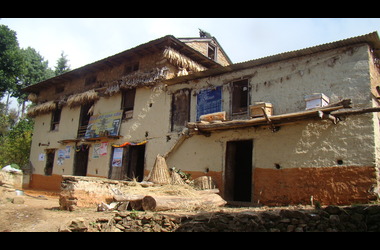Makalu trekking lies North east direction from the Kathmandu which is the capital city of Nepal. Makalu base camp trekking is less touristic trekking destination in Nepal and this trekking trail is designed after the name of Mount Makalu which is the height of 8463 meter .Makalu base camp trekking is the richest and most diverse pockets of plants and animals in Nepal. In this area there is the habitation Rai,Sherpa, and Bhotiya.They are professionally farmers. Makalu (8463meter) is the third highest mountain in the world and lies eastern part of Nepal. Arun and and Barun valleys are the most important valleys on this trails to grow food grains. Though economically poor and isolated, they retain a rich cultural heritage. They hold the key to the preservation of the unique biological and cultural treasures of the Makalu Barun area. The Makalu-Barun National Park and Conservation Area was established in 1992 as Nepal's eighth national park and the first to include an adjacent inhabited conservation area as a buffer. A new park management approach encourages local people to become actively involved in protecting the forests and natural resources upon which their lives depend, and in conserving their own rich cultural heritage. Traditional resource management systems, such as community controlled grazing and forest guardianship, are being strengthened and low level technologies introduced where appropriate. Working in collaboration with an American NGO, Woodlands Mountain Institute, Nepal is striving to improve local living standards through infrastructural, educational and income-generating activities.
Covering 2.330 sq km, Makalu-Barun is a vital component of the greater Mount Everest ecosystem which includes Nepal's 1.148 sq km Sagarmatha (Mount Everest) National Park to the west and the 35.000 sq km Qomolungma Nature Preserve in the Tibet Autonomous Region of China to the north.
The Makalu-Barun area is little known to most tourists due to its relative inaccessibility. But those few hundred trekkers and mountaineers who visit each year come away with an unforgettable experience.
For the naturalist, there are spectacular displays of wildflowers and exotic plants such as more than 3.000 species of flowering plants, with hundreds of orchid varieties, 48. Primroses and 25 of Nepal's 30 rhododendrons splash the hillsides with color. The forests shelter abundant wildlife, including the endangered red panda and musk deer as well as the Ghoral, Himalayan tahr and leopard. Ornithologists have identified 400 bird species, at least 16 of which are extremely rare.


